#they start celebrating christmas on september 1st in the philippines
Explore tagged Tumblr posts
Text
I love walking into a Filipino store and hearing Christmas music (this sounds sarcastic it’s not)
2 notes
·
View notes
Text
Simbang Gabi: The 9 Days Before Christmas
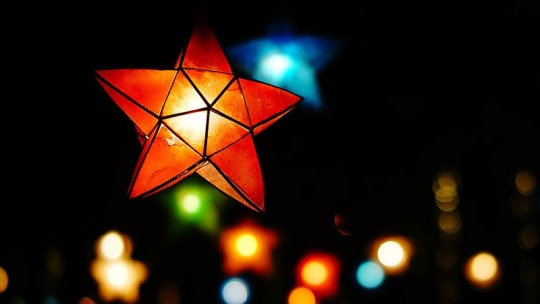
An image of a red parol from Peakpx.com
The Philippines is well-known for its extremely long Christmas celebration that a lot of foreigners often look at with confusion. Traditionally, Filipinos may start putting up their trees, playing festive songs, and counting down to the 25th as early as September in a season that's colloquially called the "ber months" or the "ber months season" (Petrelli, 2021). This period often lasts up until January or February where some houses may still keep their trees and decor pushing as far as March.
Even with this technicality, however, you'd be hard-pressed to find Filipinos truly celebrating from the very beginning of September genuinely ending it by the end of February. Most often, actual celebrations start after Undas, a period encompassing All Saints' Day and All Souls' Day on the 1st and 2nd of November respectively to commemorate the dead, similar but a lot more subtle than other Catholic countries own Day of the Dead like in Mexico's Dia de Los Muertos and Italy's Giorno dei Morti. This time period is often the start of people doing more Christmas-y things such as Kris Kringle activities leading up to the main Christmas party.
The main markers of the true start in itself is the Advent season, which starts on the Sunday nearest to the 30th in Western Churches like Roman Catholicism and leads up to Christmas ("Advent", n.d.). This is where Catholics would go to Church every Sunday leading up to Christmas to light the Advent Wreath until the final candle on its center on Christmas day on the 25th. As the Philippines is heavily influenced by Roman Catholicism, Filipinos follow the Western start of Advent and most celebrations often fall in the middle of this time period. Even the middle of Advent, however, Filipinos have a waiting period to count down before Christmas - Simbang Gabi.
What is Simbang Gabi?
Simbang Gabi (en. night mass; going to mass at night) is a Philippine Christmas tradition wherein Roman Catholic Filipinos would attend mass nine days every single morning or night before the actual Christmas celebration. Traditionally, the masses were held every morning at 4:00 AM from the 16th to the 24th which would then be capped off by Christmas Eve Mass at night or Christmas Mass on the 25th with its early schedule earning it the name Misa de Gallo (en. mass of the rooster) (Lazaro, 2020). In most dioceses, however, they often have an anticipated mass schedule that start a night earlier than the morning masses (Hermoso, 2022).
Besides being called Misa de Gallo, I had also heard the celebration being called Misa de Aguinaldo (en. mass of gifts) in some places. This shares the same name as the similar Puerto Rican tradition Misa de Aguinaldo which is also a nine-day mass held in the morning, typically at 5:00 AM which is also deeply-rooted in Puerto Rican Christmas traditions (Álvarez, 2018).
History
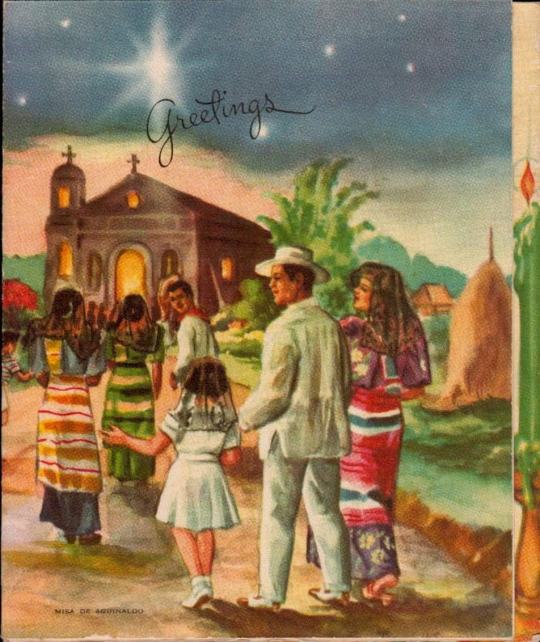
A vintage greeting card posted by the Facebook group Vintage Philippine Islands 1920-1959 (2020)
Being a Christmas tradition, it is not surprising that Simbang Gabi could trace itself back to the Spanish colonial period.
A common misconception of its origins states that the practice first started in Mexico. Hermoso (2018) states that it started on the year 1587 by Friar Diego de Soria of the Convent of San Agustin Acolman when he requested the Vatican to allow church service to be held outdoors because of an overflow of attendees during the Christmas time. Pope Sixtus V later approved of this request and even decreed that these kinds of masses be held in the Philippines at the dawn of the 16th of December. What this doesn't account for was that the practice of going to church for the Eve of Christmas dates back to even earlier than the 16th century.

The cover for an English translation and compilation of Etheria's writings by M.L. McClure and C.L. Feltoe, D.D. (1919)
The first recorded instance of Christians celebrating Christmas by going to early mass leading up to the actual date was first written by Egeria (also called Egeriae, Etheria, or Aetheria), a Christian Galician woman who first recorded it during her travels to the Levant where she notes the early morning masses and festivities from the time of the Epiphany to the Nativity. She writes in her letters later called the Itinerarium Egeriae (en. The Travel Guide of Egeria; The Pilgrimage of Etheria).
"Octave of the Festival. On the second day also they proceed in like manner to the church in Golgotha, and also on the third day; thus the feast is celebrated with all this joyfulness for three days up to the sixth hour in the church built by Constantine (...) And in Bethlehem also throughout the entire eight days the feast is celebrated with similar festal array and joyfulness daily by the priests and by all the clergy there, and by the monks who are appointed in that place (...) and immense crowds, not of monks only, but also of the laity, both men and women, flock together to Jerusalem from every quarter for the solemn and joyous observance of that day." - Egeria, 381-384; The Pilgrimage of Etheria (trans. McClure & Feltoe, 1919):
The practice of attending early morning masses up until the main festivities of the Nativity was later adopted by more Western Christian communties during the time of Pope Sixtus III when he celebrated what is widely considered the first Midnight Mass at the Basilica of St. Mary Major in Rome, not only stemming from the popularity of the Christians from Jerusalem but also the popular belief that Jesus was born at midnight (The Pillar, 2021).
The prayer spoken within the midnight vigil was then called the "mox ut gallus cantaverit" which translates to "when the rooster crows", aptly named because of the early hours the vigil tended to last which then coincided with the crowing of roosters ("Misa del Gallo: origen, historia y por qué se celebra en la madrugada del 25 de diciembre", 2022). The practice was continued by the Spanish with the name Misa de Gallo (also called Misa de Aguinaldo)which later spread throughout the Spanish Empire and could now be seen practiced in countries like Bolivia, Puerto Rico, Venezuela, and of course the Philippines.
There seem to be two variations of this: the nine-day series of masses before Christmas (found in the Philippines, Puerto Rico, and Venezuela) and the single early morning mass before Christmas day (found in Spain and Bolivia). It isn't clear if Spain and Bolivia simply dropped the nine-day tradition or if the nine-day tradition was restarted in these other colonies, however.
In the Present Day

An image of crowds outside a church during Simbang Gabi uploaded to Wikimedia by Erwin Malicdem
Today, the Simbang Gabi continues to be a popular tradtion for most Filipino Roman Catholics, even those who aren't typically as religious most parts of the year. This is given the fact that a popular belief is that when a person completes all of the nine days, they may receive a wish to whatever they desire. This is such a common belief that Bishop Broderick Pabillo, a Manila auxiliary bishop, had to remind people that the point of the tradition is to remember Jesus and his nativity (Punay, 2016). Besides this, it is also a common challenge among Filipinos to try to complete it as is or see how many days out of the nine could they actually attend.
It is not uncommon for churches these days to hold an "anticipated" mass the night before the actual date starting instead on the 15th and ending on the 24th with a Christmas mass, instead of starting on the 16th and ending on the 25th. This newer tradition had come from the reign of Filipino dictator President Ferdinand Marcos Sr. during the Martial Law years in the 70s, when Filipinos were not allowed to go out after a curfew until 4 in the morning (Macairan, 2023). This allowed more people and especially those who may not be able to start their day early or those who may have other obligations in the morning to attend masses at night time, typically at around 6 PM - 8 PM.
The only large controversy that I could remember about Simbang Gabi was back in 2011 when the event was banned from being conducted within the Philippine Center in New York City. The ban came about because of it supposedly violated Canon Law which prohibits religious worship in unconsecrated ground or in other words places that aren't seen as places of worship. In an article by Adarlo & Pastor (2014), Rev. Dr. Joseph G. Marabe, the at-the-time head of the Chapel of San Lorenzo Ruiz and a priest-in-residence at St. Patrick's Cathedral where the ban took place, explains in an interview with news site The FilAm:
"It’s not allowed by law to have Holy Mass in an unconsecrated place. Worship should take place in a sacred place. That was an explanation but not a decision. The Archdiocese decides." - Rev. Dr. Joseph G. Marabe, head of the Chapel of San Lorenzo Ruiz in Chinatown, New York (2011)
The ban was later lifted on 2014 after community leader Loida Nicolas Lewis wrote a letter to the diocese to reconsider the ban which led to the return of the almost 30-year-old tradition that year (Balitang America, ABS-CBN North America Bureau, 2014).
Besides being a huge part of current traditions, a lot of Filipinos, and especially Filipino youth, use the event as an excuse to go out during the night to hang out with friends and even go on dates with their partners. It is not an uncommon sight to see a group of teenagers, often wearing maybe less than typical church clothes, by the edge of the Church seemingly attending mass. Whether or not they're actually being attentive is hard to decipher. Either way, this has led to an explosion of memes almost every year just mocking these kinds of people or making fun of their own.

A screenshot of the "Simbang gabi starter pack" posted by user rhapido on 9Gag.com (2022)
Earlier versions of this meme could be seen posted throughout Filipino social media during the early 2010s
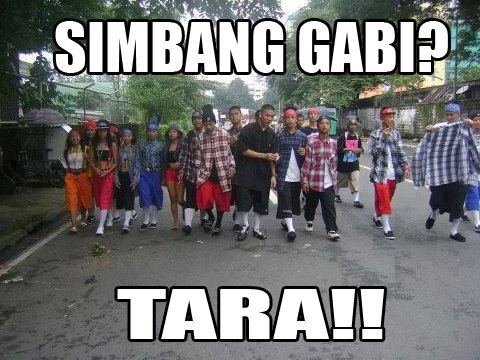
A meme posted by the Facebook page FEU Memes (2012)
The barkada (en. friend group) going to Simbang Gabi had been an older tradition that has found a lot more popularity in the contemporary era because of social media. My mother had told me that she used to use it as an excuse herself back in the 80s to hang out with her friends at night time. This may be a continued past time for especially younger people for years to come.
There's also many street foods associated with Simbang Gabi that may not be unique to the event itself but are nevertheless heavily associated with the event due to their widespread sale during this time period. Foods like bibingka, puto bumbong, kutsinta, and other popular rice cakes dominate the scene which definitely satisfy the hungry parishioners who had, most likely, not eaten breakfast or dinner before going to church. With their strong associations with Simbang Gabii and Filipino Christmas as a whole, I might discuss these on a later date.
Simbang Gabi, from my experience
Growing up and living in the Philippines and especially being raised Catholic within a Catholic town named after a Catholic saint and going to a Catholic school named after another Catholic saint, it probably won't shock you that I, myself, had tried to complete the nine days of Simbang Gabi myself. I had attempted it several times with only maybe trying seriously by myself once in my life. It was quite the experience to just try to dedicate yourself into completing a goal to do something for nine consecutive days straight.
My first attempt was when I was in Junior High and it was with my sister and two people who worked for my parents and had helped watch over us. It was something that I always wanted to try doing and especially since I was gaining a lot more independence at the time so what better to try it out without the rest of the family? With adult supervision, of course.
Since we lived quite away from the actual church, the place was already packed even an hour before the actual mass started. There was barely any seats left and even less standing room leading to a huge overflow of people stuck outdoors, only hearing mass from the outdated speaker system that they had erected in place of the old bell tower.
The mass in our church was often done in the dark during the night out of an deliberate and probably aesthetic choice with only the alter being illuminated by the lights. The rest was lit up by the scattered about Christmas decor throughout the church and the church patio. It always felt like going to some liminal space that other nights at church just doesn't give.
Once the mass has been concluded, people rush out of the doors in thick crowds to find their way into the footpaths leading on to the main town streets. Some opt to stay behind to enjoy the food stalls that had pop-up for the night to eat bibingka, puto, sapin-sapin, and palitaw among other things. Some of the teens had decided to raid the nearby small park and playground as a hang-out spot to talk the night away before they rush home for their curfews. Meanwhile others were just rushing to get home as soon as they can, with people lining up to go to the rudimentary parking space that the church created while the others who didn't own their own vehicles forced to compete for the very few commuter vehicles still riding through the night, hunting for passengers.
This was before we had our own car, so we were with the latter crowds of people, trying to peer through the dark streets only illuminated by the scant Christmas lights that still refused to turn off as the night progressed. Every so often, two headlights excite the crowd and a swarm of them start running in anticipation with not care or tact if they would crush children or separate families all to take a seat on the night jeepneys, some the few commutes left after 9.
My sister was an expert in finding her way through it, reaching out to the doors to form a barricade for herself and the rest of us to prevent others from taking our seats before letting herself in. I still think I would've been left behind if it weren't for her doing that out of sheer competitiveness with the crowds.
We settled into our seats and squeezed in tightly to allow other passengers in so we could all go home as soon as we can. It was a tight but otherwise uneventful commute every night with nothing but tired people waiting for their stops and slowly emptying the once packed vehicle. Since we live in the outskirts of the town, we were often the last few and at times, the drivers would transfer us to other jeeps just so they can go home themselves. This had sometimes instead left us to walk the remainder of the way there through unpaved highway sidewalks.
After a few nights of it, I became more and more reluctant to continue because of the frenzy that it had almost every single night and it was extremely inconvenient for my time and the time of those with me. I didn't complete it then and I hadn't seriously tried until 9th Grade, which honestly was more uneventful.
That attempt was mostly my siblings and I staying in Makati City and Taguig City and going to easily traveled to churches that we could walk to by foot, and high-end malls that have annual Simbang Gabi masses for their shoppers, facilitated by the local diocese and the local fancy church. I was able to complete those easily because I was often dragged either by my siblings or my grandmother who used to never miss a day of church when she was still more active.
It was less about the challenge at that point and more of an obligation which isn't a bad thing and honestly is probably closer to how it should be celebrated.
I hadn't gone to Simbang Gabi since 2019 and I don't have any plans to try this year either. Not really because I don't want to necessarily, but specifically because I physically can't. I still think its pretty fun to do and honestly maybe a good excuse to meet with my friends that I haven't seen in a while. Sadly, I just simply cannot do it now nor in the near future.
Maybe one day I could once again go out at those cold December night to meet my friends and maybe eat some bibingka on my way home but I guess I'll just leave every one else to it.
Sources
Introduction
Advent. (n.d.). In Britannica. Retrieved on 13 December 2023, from https://www.britannica.com/topic/Advent
In The Philippines Christmas Eve Includes A Late Night Street Food Feast, Filipino Christmas, HD wallpaper [image]. (n.d.). Peakpx. Retrieved on 15 December 2023, from https://www.peakpx.com/en/hd-wallpaper-desktop-wxdle
Petrelli, M. (2021, December 20). The country that celebrates Christmas for more than 4 months a year. CNBC. Retrieved on 13 December 2023, from https://www.cnbc.com/2021/12/21/philippines-the-longest-christmas-celebrations-in-the-world-.html
What is Simbang Gabi?
Álvarez, F. (2018, November 22). Una tradición matutina la Misa de Aguinaldo. Primera Hora. Retrieved on 13 December 2023, from https://www.primerahora.com/noticias/puerto-rico/notas/una-tradicion-matutina-la-misa-de-aguinaldo/
Hermoso, C. (2022, December 15). 9-day ‘Simbang Gabi’ begins on Dec. 16; anticipated masses to begin tonight. Manila Bulletin. Retrieved on 13 December 2023, from https://mb.com.ph/2022/12/15/9-day-simbang-gabi-begins-on-dec-16-anticipated-masses-to-begin-tonight/
Lazaro, J. (2020, December 11). The Christmas tradition of Simbang Gabi: After five centuries, this Filipino Christmas tradition lives on. U.S. Catholic. Retrieved on 13 December 2023, from https://uscatholic.org/articles/202012/the-christmas-tradition-of-simbang-gabi/
History
Hermoso, C. (2018, December 15). ‘Simbang Gabi’ a manifestation of the Filipinos’ strong faith in God, says bishop. Manila Bulletin. Retrieved on 13 December 2023, from https://mb.com.ph/2018/12/15/simbang-gabi-a-manifestation-of-the-filipinos-strong-faith-in-god-says-bishop/
Etheria (1919). The Pilgrimage of Etheria (McClure, M., & Feltoe, C. Ed. & Trans.). Society for Promoting Christian Knowledge. Retrieved on 13 December 2023, from https://www.ccel.org/m/mcclure/etheria/etheria.htm (Original work published 384 C.E.)
McClure, M., & Feltoe, C. (1919). [An image of the book cover of "The Pilgrimage of Etheria"]. Retrieved on 15 December 2023, from https://www.ccel.org/m/mcclure/etheria/etheria.htm
The Pillar. (2021, December 21). What time is Midnight Mass?. The Pillar. Retrieved on 15 December 2023, from https://www.pillarcatholic.com/p/what-time-is-midnight-mass
Misa del Gallo: origen, historia y por qué se celebra en la madrugada del 25 de diciembre. (2022, December 24). Marca. Retrieved on 15 December 2023, from https://www.marca.com/tiramillas/actualidad/2022/12/24/63a6c106268e3e7c468b45e8.html
Vintage Philippine Islands 1920-1959. (2020, December 25). A Vintage Greeting Card showing Philippine Christmas… Maligayang Pasko from Vintage Philippine Islands 1920-1959 [image]. Facebook. Retrieved 15 December 2023, from https://www.facebook.com/510513375695362/photos/a.1701322009947820/3595821097164559/?type=3
In the Present Day
Adarlo, S., & Pastor, C. (2014, November 3). Fr. Joseph Marabe breaks silence over Simbang Gabi ban (Part 2). The FilAm: A Magazine for Filipino Americans in New York. Retrieved on 15 December 2023, from https://thefilam.net/archives/16127
Balitang America, ABS-CBN North America Bureau. (2014, September 19). Simbang Gabi returns to NYC after a brief ban. ABS-CBN News. Retrieved on 15 December 2023 from https://news.abs-cbn.com/global-filipino/09/19/14/simbang-gabi-returns-nyc-after-brief-ban
FEU Memes. (2012, December 15). eto yung mga madalas ko makita sa gilid ng simbahan e [image]. Retrieved on 15 December 2023 from https://www.facebook.com/PIYUMEMES/photos/a.210778985704527/317211885061236/?type=3
Macaira, E. (2023, December 15). Simbang Gabi: It’s the mass, not the time. Philippine Star. Retrieved on 15 December 2023, from https://www.philstar.com/headlines/2023/12/15/2318980/simbang-gabi-its-mass-not-time
Malicdem, E. (n.d.) The Bamboo Organ Church or the St. Joseph Parish Church of Las Piñas City in the Philippines during "Simbang Gabi" or Night Mass on Christmas eve. Photo was part of Schadow1 Expeditions coverage of Las Piñas during Christmas season. [image]. Retrieved on 15 December 2023 from https://en.wikipedia.org/wiki/Simbang_Gabi#/media/File:Las_Pinas_Church_during_Simbang_Gabi.jpg
Punay, E. (2016, December 19). ‘Simbang Gabi’ won’t grant wishes – Bishop. Philippine Star Global. Retrieved on 15 December 2023, from https://www.philstar.com/headlines/2016/12/19/1654920/simbang-gabi-wont-grant-wishes-bishop
rhapido. (2022, November 30). Simbang gabi starter pack [Screenshot]. 9Gag. Retrieved 15 December 2023, from https://9gag.com/gag/a5Xnzgr
#mayaposts#mayapino#philippines#filipino#history#philippine history#filipino history#christmas#filipino christmas#philippine christmas#simbang gabi#misa de gallo#misa de aguinaldo#long post#very long post#christianity#catholicism#roman catholic#christian history#food mention
24 notes
·
View notes
Text
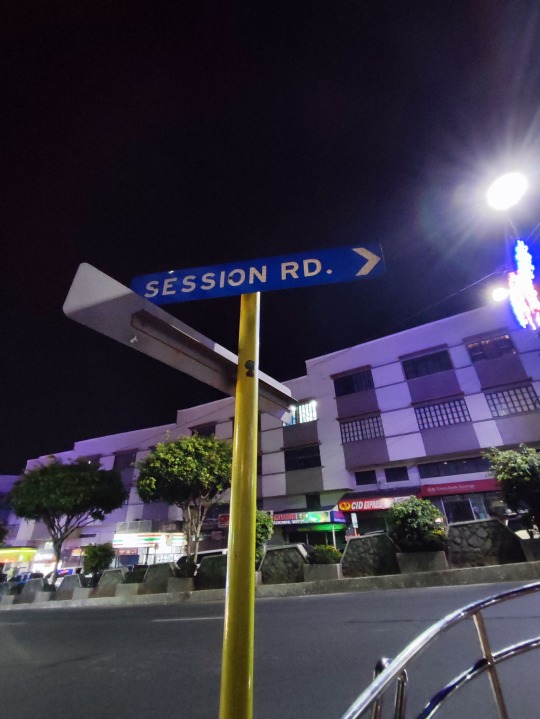
'Baguio City The Sanctuary"
Been a while since I updated my tumblr account since become busy doing a lot of things lately specially on my work things and other stuff. But anyway its already the most wonderful time of the year. Christmas Songs are already playing everywhere. Whenever your strike there is a Christmas decoration specially on malls. Streets were lighten up with Christmas lights. Houses were already decorated with festive designs for Christmas.
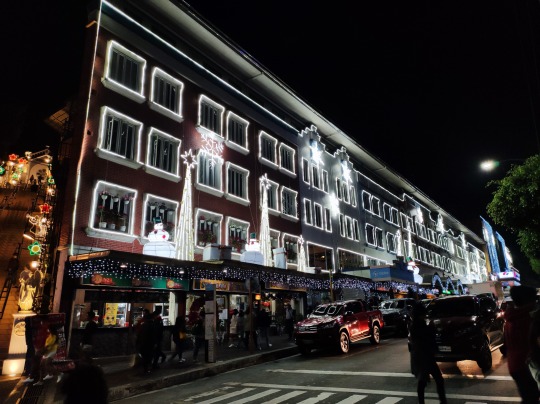
Philippines has its longest celebration for Christmas season starting it from September up to December. Starting 1st of September all malls already playing Christmas Songs. Everywhere you go you can feel the spirit of Christmas already.
Whenever Christmas season starts in the Philippines there is a one particular place the everyone would go and travel. The Baguio City, known as the summer capital of the Philippines. But did you know that even Christmas season it its more popular and very trendy to travel it.

Baguio City
Here the must visit places in when you went to Baguio:

The Baguio Cathedral ( Our Lady of the Atonement Cathedral) is one of the most popular tourist spot in Baguio City it is located in Cathedral Loop adjacent to Session Road in Baguio. We experience attending mass at the Baguio Cathedral during December the church is already decorated with a lot of Christmas lights. When you visit Baguio you must include Baguio Cathedral on your list.
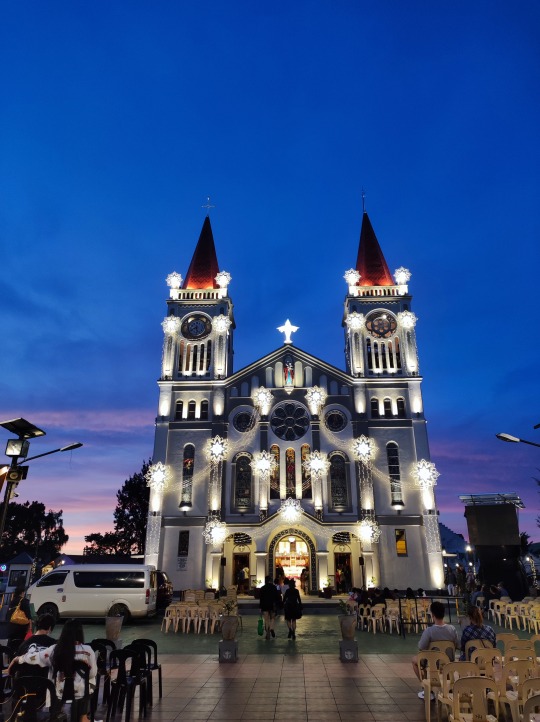
The Baguio Cathedral ( Our Lady of the Atonement Cathedral)
Another beautiful attraction that you must visit is Mirador Heritage and Eco park it is located at 15 St Theresa Ext Baguio Benguet.

Mirador Heritage and Eco Park
This place was astonishing and very relaxing. I feels like you were reconnected to the our nature by looking the beautiful view on top of it.

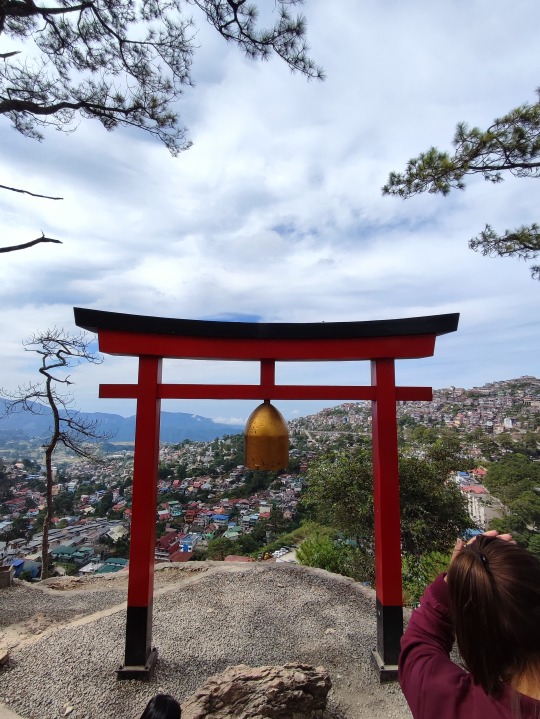
It makes my mind reset and feel redeem. If you were looking for place to meditate I will suggest Mirador to be on your list.

Bamboo Tress at Mirador Heritage and Eco Park.
Ofcourse, another place that you must visit is the most popular spot in Baguio City the Burnham Park.


Burnham Park
Burham Park is one of the most popular place in Baguio were in you can enjoy different activities like biking and riding a boat. You can also enjoy the burnham by having a picnic with your family friends, and love ones.

Tourist enjoy biking and boat ride ( you can rent it for an hour)

Baguio is sanctuary place were you can go whenever you wanted to meditate and redeem yourself. Traveling makes our soul heal and rich with new experience.


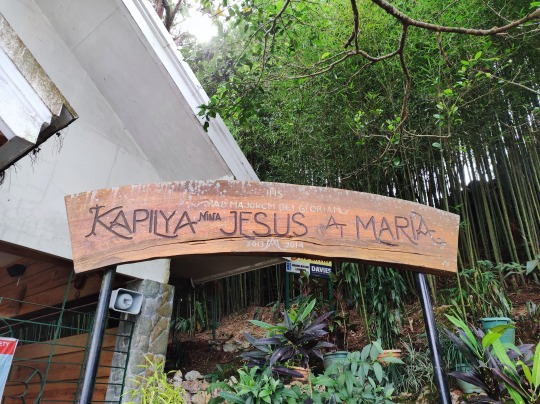

1 note
·
View note
Text
Blessed holidays, everyone!!!!!
I come from a country where Christmas is celebrated at the start of the "ber" months (September 1st) until the "three kings" (January 5th). The Christmas lights are already lit on September and we don't take down the tree until January 6. And in almost every establishment, you can hear Christmas songs. Kids would go around singing Christmas carols. The misa de gallo (early morning mass/simbang gabi) is held starting December 16 until December 24. There are areas around the archipelago where kids would go to their godparents' (ninongs and ninangs) houses. Godparents would then give out gifts. Belens(Christmas nativity) scenes are set usually in every community. And a noche buena is eaten on Christmas Eve.
Malipayon nga Paskwa [Hiligaynon, my native tongue] /Malagayang Pasko [Filipino] (Merry Christmas), everyone.
-a Filipina from the Philippines.
1 note
·
View note
Text
I find it very funny that people on tumblr start bringing up the holiday season exactly 12 midnight on November 1 whereas we in the Philippines started celebrating Christmas since last September 1st sooooo
#you guys are very late to the party#malls here have set up their christmas trees since september#we even have a fucking countdown once the clock ticks midnight on september 1st#woo
1 note
·
View note
Text
BIBINGKA AND PUTO BUMBONG: FINEST CHRISTMAS RICE CAKES
It is only the first (1st) quarter of the year. There are still three (3) remaining quarters to welcome New Year. There are still more time to enjoy every months of the year 2022. People still can enjoy every moment together with their family and friends; to embark on a new adventures and create lifetime memories. Every New Year starts, I would immediately looks forward to my favorite holiday that really has a special place in my heart; Christmas Day. The day when we commemorate the birth of Jesus Christ. The day when happiness has no end. The day when the word full no longer exists in our vocabulary because you can’t really avoid eating delicious food every Christmas Day. As we, the Filipinos mark –ber months (September, October, November, and December) as the start of the Christmas countdown, the ever-famous and nostalgic smell of Bibingka and Puto Bumbong would remind us that it is almost Christmas Day though there are still few months left to celebrate it.
What are these Christmas delicacies? Bibingka is just one of the few famous rice cakes in the Philippines; a soft and cushioned rice cake cooked in a pot lined with banana leaves. Its aroma is just as addicting as someone puts magic potion in you. On the other hand, Puto Bumbong is also a rice cake; violet in color steamed in a bamboo tubes topped with cheese and grated coconut.
Pre-pandemic just hits really different when the season of Christmas is coming. I would wish my schedule in school was Afternoon shift so the dismissal would be around 6:00 PM and I could smell and buy my favorite Bibingka and Puto Bumbong. What is more, every mass around months of September to November and Simbang Gabi when December comes, you would see countless vendors selling these tasty and mouthwatering kakanin. The feeling you could not explain when you start eating it hot along with your family and friends is just that a feeling you would miss after the Christmas season ends.
When Misa de Gallo ends, numerous Filipino would wait for a minutes to hour/s to have the two classic rice cakes every Christmas; Bibingka and Puto Bumbong. Our family often asks for reservation because most of the time these two rice cakes (kakanin) sell out really fast and it just Christmas evening is not complete without having it in our table.
If someone is planning to build a seasonal business, you could sell these rice cakes during the Christmas season as Filipino people would really waited for a months to finally have these kakanin again. This time, it is not just about how much you earn but it also about how you were able to create an unexpected relationship and connection with your customers; not to mention the nostalgic feeling you would feel after the holiday ends. Puto Bumbong and Bibingka make Christmas season more special and memorable. The smell, taste, and appearance would make you feel of an exceptional happiness.
0 notes
Text
Maligayang Pasko, Pilipinas! (Merry Christmas, Philippines!)

If you are from the Philippines, you'd know that we have the longest celebration of Christmas. It starts in September, usually radio and TV stations plays Christmas songs. Your facebook timeline would probably flooded with Jose Mari Chan memes and you will hear his songs for the next 4 months.
But what is the frenzy surrounding the "Ber months"? I think this represents a "psychological time clock to prepare" a jammed Christmas Calendar with family, friends, and especially returning OFWs.
During this time of the year, shoppers in mall are gathered around the tall Christmas trees as it is lit for holidays. The cities become lit up with Christmas lights all over. Traditionally, you could visit the mall every weekend and see unbelievable fireworks and light shows counting down the days to December. It's December 1st, the air is chilly around this time of the year, and everything around you feels festive, lively, and somewhat nostalgic.
With the threat of Covid-19, everyone is going to celebrate responsibly by social distancing, all masked up, and some will just celebrate virtually with family and friends. But don't fret, you can still drive by awesome lights or the bursting fireworks around the city.
It's been a hard year for everyone with pandemic leaving many people sick or out of work in the Philippines. Still, people find these challenges make celebrating Christmas especially important, as this season's focus is being thankful, finding hope, spreading love, and being together with family.
The alert level finally ease up recently, the covid infection rate is starting to go down, and things are starting to look a little brighter. I hope that this Christmas will be better than last year. Advance Happy Holidays to everyone!
0 notes
Text
NIU by Vikings Opens Second Branch at The Podium
It took almost four years, but NIU by Vikings has finally opened a second branch that is much closer for those living in the northern part of Metro Manila. While Vikings Luxury Buffet has continued its conquest of the entire country with several new branches from Pampanga to Metro Manila and all the way down to Davao, its more sophisticated and elegant brother has been content with its base in SM Aura Premier ever since it opened in late 2014. That changed last August 14, 2018 when NIU by Vikings finally opened its second branch at the busy central business district of Ortigas, even bringing with them their signature award-winning Binusog na Lechon.
You can find the new sparkling branch of NIU by Vikings at the fifth level of The Podium Mall in Ortigas Center, Mandaluyong. The Hungry Kat was invited to visit this new dining destination last week but since I am still recovering from my recent hospital procedure, my blog partner had to go on his own to sample all those amazing dishes that Vikings luxury buffet is known for. He says it’s a tough job but he will gladly do it for me.
The main difference between NIU and Vikings is that NIU offers an even classier and more elegant setting that feels like dining inside a hotel rather than just at another restaurant. It offers a wide selection of cuisines that ranges from Mediterranean, Chinese, Japanese, French, and Italian. Expect a truly evolved dining experience as you feast on these distinctly appetizing dishes from all over the globe. I can spot Richie, aka The Pickiest Eater in the World getting ready with his first of many rounds at the buffet.
“NIU” actually means nine in the Viking language and is a significant number in Norse mythology. The restaurant also has nine different stations with a variety of meals from appetizers to main courses and desserts. You can have a romantic dinner buffet here with your special someone or gather the entire family for a luxury feast of epic proportions.
It may not look so at the entrance, but NIU by Vikings Podium is a huge restaurant that can handle big groups and more. They also have two semi-private dining rooms that offer a great view of the busy streets of Ortigas below. I fondly remember all the times I have enjoyed my lunch or dinner at NIU in SM Aura Premiere (Read: Niu by Vikings Celebrates 1st Anniversary with “Niu” Dishes) so I am really excited to dine at their Podium branch soon.
The buffet lineup at NIU is so long that it is quite hard deciding where to start. That is always my problem when I visit NIU or any Vikings luxury buffet restaurant. I usually head straight to my favorites like tempura and hakao, but guests can start their battle at the appetizers station which offer cold seafood, salads, cheeses, hams, and other bite-sized items.
Make sure to get a plate of their Baked Oysters which is loaded with lots and lots of melted cheese. They also have breads, soups, and other interesting items to start your buffet.
The Japanese Station is also a good place to start with its extensive sushi and sashimi selection. Enjoy all the salmon and tuna sashimi you like, or get some of their more unique creations like the barbecue roll, dynamite roll, California maki, and many more.
But the first item I usually get at the buffet is their crunchy Tempura. One thing I really appreciate when dining at NIU by Vikings is that the tempura does not usually run out, unlike in other buffets where you might have to wait in line for the tempura to be refilled.
Those who like Shawarma can make their own servings at the shawarma station which actually features an automatic chopping machine. If you don’t feel like making your own shawarma, then just ask the servers to prepare one for you. That is another advantage when dining at NIU, you can ask the servers to deliver items to your table instead of getting them at the buffet. Now that is true luxury.
Spanish cuisine is also represented at NIU by Vikings with the Paella Valencia that comes loaded with seafood toppings. There’s also the Italian Station which features a couple of pizzas including the Spicy All Meat Pizza.
The Pasta Station is another tummy-filling area where you can ask the chefs to prepare carbonara, bolognese, spaghetti, and other specialties. During dinners and weekends, NIU has more premium items on the buffet that are not available during their weekday lunch service, like the Foie Gras Ravioli with its decadent duck liver.
Head over to the Chinese Station and have fun choosing from all the dimsum items on the table. When I get to visit here, I will definitely grab all the Hakao I can handle. The other dimsum all look interesting like the Xiao Long Bao, Pork and Shrimp Siomai, Phoenix Dumplings, and others.
These Penguin Chocolate Buns are just so cute! They are filled with yummy and gooey chocolate inside so these will be great for appetizers or dessert. The Chicken Custard Buns are also delightful so kids will love these items as well.
They also have some Filipino dishes including the Grilled Pork Liempo, Chicken Inasal, and Lechon Kawali. These favorites are always appreciated in any occasion.
Several Chinese dishes are also available so make sure to get the Steamed Suahe, Ginger Onion Crab, and Szechuan BBQ Fish. Aside from these, you can find a roasting section featuring Roasted Duck, Asado, Sausages, and more.
But the highlight at NIU by Vikings would definitely be their Carving Station that offers a plethora of meats and savory dishes that will truly make your mouth water.
The Rib Eye Steak is the centerpiece of this station and rightfully so. Ask the chef for a slice or two and he will cook it on the spot according to your preferred doneness. When you are finished eating this glorious beef, ask for some meaty servings of the Angus Chuck Eye steak and Angus Belly.
Another can’t-miss dish is the award-winning Binusog na Lechon which you can find at all Vikings, Four Seasons Buffet & Hotpot, and NIU restaurants. This stuffed lechon belly was an awardee at the 2015 Philippine Culinary Cup and thankfully Vikings has included it in their buffet ever since. Other items you can find at the carving station are the Stuffed Turkey, Beef Ribs, and Leg of Lamb.
Just as in any Vikings restaurant, drinks and beverages are already included in the buffet, so you can find a wide selection of juices and sodas including tea, coffee, fruit shake, beers, wines, and even sake.
What makes NIU more interesting is that they also offer several signature cocktails like the Acapulco Drift, Cloud 9, and the Classic Margarita. Yes, you can have as many glasses as you want, so the celebration never ends.
Make sure to leave room for dessert because there are so many sweet options to choose from. Head over to the Dessert Bar for their cheesecakes, chocolate mousse, fruit salad, coffee jelly, and more.
Kids and adults will enjoy getting their donuts and topping it off with candies, brownies, cookies, ice cream or whatever combination they want. Bibingka and puto bumbong is also available for an early taste of Christmas. The Death by Chocolate is one cake that will really delight all the chocolate lovers.
For those with birthdays coming soon, you can avail of NIU by Vikings’ Birthday Promo where you can get a FREE buffet on your birthday just by bringing along one other paying customer. Just like at Vikings, they will serenade the birthday celebrants with a special song and their own birthday cake.
The rates for NIU by Vikings at The Podium are P938 (+5% service charge) for Weekday Lunch and P1,438 (+5% service charge) for Dinners and Weekends plus Holidays. But here’s a special opening treat! From August 21 to September 2, 2018, all guests who will make prior reservations on their landline 845-4647 will get 15% discount upon dining. Better yet, if you have a Vikings Reward Card, members and their companions will get 20% discount upon dining. Now those are the perfect reasons to visit NIU by Vikings this week so you can enjoy this grand buffet celebration at these fantastic rates.
NIU by Vikings
5/F The Podium Mall, 18 ADB Ave, Ortigas Center, Mandaluyong
845-4647 / (0917) 854-2888 / (0939) 901-8888
www.niu.ph
www.facebook.com/niuthepodium
#NIUatthePodium#aNIUexperience#NIUbyVikings#VikingsLuxuryBuffet#Buffet#Restaurant#ThePodiumMall#Food
1 note
·
View note
Photo

✨✨✨𝐓𝐎𝐔𝐑 𝐒𝐓𝐎𝐏+𝐈𝐍𝐓’𝐋 𝐆𝐈𝐕𝐄𝐀𝐖𝐀𝐘!✨✨✨ 𝐐𝐎𝐓𝐃: 𝐖𝐡𝐚𝐭 𝐝𝐨 𝐲𝐨𝐮 𝐭𝐡𝐢𝐧𝐤 𝐢𝐬 𝐨𝐧𝐞 𝐨𝐟 𝐭𝐡𝐞 𝐦𝐨𝐬𝐭 𝐮𝐧𝐢𝐪𝐮𝐞 traditions or thing about your country? 𝐀𝐎𝐓𝐃: I have mentioned this quite a couple of times, but here in the Philippines, we start celebrating Christmas from September 1st up to the 1st Sunday after New Year’s Day 🤩 So here I am, greeting all of you, “Merry Christmas” from the Philippines ✨🥳 Today, I’m thrilled to help out 𝐂𝐚𝐦𝐞𝐨 𝐑𝐞𝐧𝐚𝐞, with 𝐁𝐎𝐌𝐌 𝐓𝐨𝐮𝐫𝐬, for her newest book baby, “𝐎𝐟 𝐄𝐚𝐫𝐭𝐡 𝐚𝐧𝐝 𝐀𝐢𝐫.” It’s the 3rd book of 𝐇𝐞𝐢𝐫 𝐨𝐟 𝐁𝐥𝐨𝐨𝐝 𝐚𝐧𝐝 𝐅𝐢𝐫𝐞 𝐒𝐞𝐫𝐢𝐞𝐬 released last Aug 24th. Check out the synopsis in the comments section and the purchase link in my bio to find out more about YA Dark Fantasy Romance 😉 𝐆𝐑𝐀𝐍𝐃 𝐏𝐑𝐈𝐙𝐄: -Signed copies of: Of The Blood, Of Fire And Water, and Of Earth And Air -Series swag pack -$10 Amazon gift card 𝐓𝐎 𝐄𝐍𝐓��𝐑: -Must be following ME, (@nessietwihard02) @CameoRenae and @bookofmatchesmedia.
-Like, comment, save, and tag 1 bookish friend 𝐄𝐗𝐓𝐑𝐀 𝐄𝐍𝐓𝐑𝐈𝐄𝐒: -Share giveaway in story for 24hrs tagging @cameorenae and @bookofmatchesmedia
-Tag 3 friends in a comment (you can do this up to 10 times on each post)
-Search #OfEarthAndAirTour and enter the giveaway on all the tour hosts' posts every day for 10 days for more chances to win!
𝐑𝐔𝐋𝐄𝐒: Giveaway will end on September 3, 2021 at midnight PST, open to US/INTL, not affiliated with IG, must be 16+ or have parental permission to enter, must be a public act to verify entries. Please do not follow and unfollow later, you will be banned from all future giveaways from BOMM Tours and Cameo Renae. #TheBookwormPrincess👸🏻 #CameoRenae #OfTheBlood #OfFireAndWater #OfEarthAndAir #HeirOfBloodAndFireSeries #OfEarthAndAirTour #BOMMtours #BOMMIndieAuthors #BookOfMatchesMedia #bibliophile #bookstagram #books #readersofig #igreads #booklover #bookaholic #mybookfeatures #bookstagramcommunity #booklovers #PageTurnersPH #bookstagramfeaturesonly #booksbooksbooks #bookworm #bookdragon https://www.instagram.com/p/CTSANfQLtYc/?utm_medium=tumblr
#ofearthandairtour#thebookwormprincess👸🏻#cameorenae#oftheblood#offireandwater#ofearthandair#heirofbloodandfireseries#bommtours#bommindieauthors#bookofmatchesmedia#bibliophile#bookstagram#books#readersofig#igreads#booklover#bookaholic#mybookfeatures#bookstagramcommunity#booklovers#pageturnersph#bookstagramfeaturesonly#booksbooksbooks#bookworm#bookdragon
0 notes
Text
Module 3: The Pinoy Identity

The meme I made is a play on the “Ight Imma Head Out” Spongebob meme (among all the countless reaction pictures and videos derived from the popular Nickelodeon kids’ show), which originated from Twitter and has also been widely used on other social media platforms. It humors the Filipino people’s love of Christmas season and how we enthusiastically begin our celebrations and countdowns as soon as the “-ber” months start, specifically on the 1st of September. I edited in some lights, a holiday wreath, and a parol, some common Christmas decorations with a touch of Filipino spirit. I also honored local singer/songwriter Jose Marie Chan, known for his delightful Christmas albums we hear on television, malls, restaurants, and many other establishments.
Filipinos have had the identity of being very happy and jolly people, seen to be smiling in times of calamities and other hardships. Strother (2013) points out that the Philippines has the third largest population of Catholics in the world, just behind Brazil and Mexico. Our dominant religious affiliation and general joyous personalities as people greatly explain our passionate approach toward this holiday, serving as both our identity expression and performance, as well as our positioning in society.
Additional Reference
Strother, J. (2013, March 6). Power of the Catholic Church slipping in the Philippines. The Christian Science Monitor. Retrieved from https://www.csmonitor.com/World/Asia-Pacific/2013/0306/Power-of-the-Catholic-Church-slipping-in-Philippines
0 notes
Text
Celebrating Christmas in the Philippines: The Christmas Capital of Asia (Part 2)

A parol shop selling other Christmas decorations posted by yeowatzup (2005) via Wikimedia
This is a second part of a longer post on Christmas in the Philippines. Part 1 can be found here.
(Also I know this is a little late, had some personal stuff this holiday season so sowwyy)
Practices in the Present Day
Christmas traditions today are a mixture of both traditionally Hispanic and American practices with some new and additional modern things added in from the past century. Most of these traditions are still done by a lot of Filipino families today and continue to be icons in Filipino culture.
The Longest Christmas

An image of a calendar posted by Benham Norouzi (2021) via Unsplash
It is well-known that the Philippines starts the Christmas traditions on the 1st of September, making it the earliest start of the any Christmas season in the world. This comes from a lot of factors, primarily because Filipinos love the idea of counting down the 100 days before then (which start at the 16th of September), and was later on used in other settings like when people would put up decorations in their own homes and in businesses encouraging the later commercialized holiday to also start early with sales and other deals (Handong, 2017). This later made it sort of official that Christmas would start on September, earning the season the colloquial name "The Ber Months" or "The Ber Season".
As I said in a previous post, however, actual celebrations often start after undas and more specifically after the start of Advent and more intensely during the start of Simbang Gabi or Misa de Gallo on the 16th of December and you would be hard-pressed to actually find people celebrating before then.
It doesn't stop people from having online count downs with Jose Mari Chan's infamous Christmas song "Christmas in our Hearts" in the background (that had been memed on in the Philippines on the scale of "All I want for Christmas is You" in America) on the 31st of August to midnight to greet the 1st of September though.
24th as the Day of Celebration
Other practices that Filipinos inherited from the Spanish from this time was the practice of mostly celebrating the holiday on the eve of instead of the actual day of the 25th. This comes from an older Roman Catholic tradition of having Christmas mass from night time to the next day based on the traditional belief that Jesus was born on exactly midnight on the 25th (The Pillar, 2021). Celebrations like Christmas Eve dinner (the Noche Buana) and gift giving happen during this time with gift opening happening during the stroke of midnight.
Personal side-note, since I'm not gonna add a final section detailing more personal stuff here because it's getting too long: as a kid, I was always confused at American TV shows that showed people sleeping at night before opening up presents in the morning. It never really registered and I always questioned why they had to wait 'til morning for them to open presents. because of this, the whole Santa Claus thing didn't make sense to me either.
Simbang Gabi
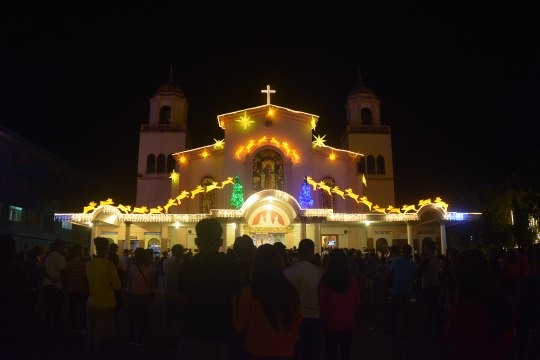
People attending Simbang Gabi captured in St. Anthony de Padua Parish Church, Iriga City, Camarines Sur uploaded by Patpat Nava (2015) via Wikimedia
Similar to most Christian countries from the 16th to the 18th Century, the Philippines celebrated Christmas as a religious holiday focused on prayer and masses, often seen in the form of Simbang Gabi or Misa de Gallo which I had discussed in full detail with its history and current practices here. The basics of it is that Filipinos would celebrate Christmas and the lead-up to the holiday by going to church every day for nine days until the 25th starting on the 16th. The practice was brought over by the Spaniards as it can be seen practiced or some form of it practiced in Spain and a few other Hispanic countries.
Other than just church-going, Simbang Gabi is also famous for its many foods that had come to be strongly tied to the event, mostly rice cakes that are sold outside of churches early in the morning and late at night like Puto Bumbong, Bibingka, Sapin-sapin, and many more.
The Parol or The Star Lantern

A photo of parols displayed on a store credited to Sagisag PH posted by Behold Philippines (2021).
One of the most recognizable symbols of the Filipino Christmas is the star lantern known as parols that often can be seen decorating the houses of Filipinos of all different backgrounds. According to Giselle Tong-Walters of the Association for the Advancement of Filipino American Arts and Culture or FilAm Arts, the parol predates Spanish colonization as precolonial Filipinos would often hang lanterns on their homes at night to tell any traveler that may have seen it that they are welcome to seek refuge there (Dormido, 2023).
Others note that the parol had taken inspiration from the Mexican piñata which had originally come from Spain that had come from Italy some time in the 1300s and was said to have been first used in the Philippines as a light-source to guide people early in the morning during Simbang Gabi which remains the popular origin for the parol today (MyParol, n.d.).
The modern parol is said to have been first created by Kapampangan artist Francisco Estanislao in 1908 by using the traditional five-point design by using Bamboo strips and Japanese paper which was later done with the use of the newly created material cellophane as well as the increased use of electric lights that made the star lanterns that Filipinos are familiar with today (Tapino, 2018).
Today many variants of the lantern exists including more and more complicated designs with even the use of sea shells being fairly common.
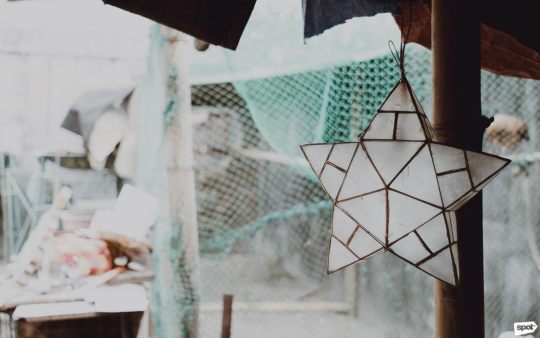
Seashell lanterns are also a fairly common sight during the holiday season. Image posted by Tapino via Spot.ph (2018).
The Nativity or Belen Display

Capas Municipality’s 13-meter tall Belen takes on Eiffel Tower as the backdrop for their winning Belen, made of bamboo, recycled materials and decorated with LED lights. Image posted by Christine Dayrit via PhilStar (2018).
Like a lot of religious Christian places or former religious Christian places, the nativity is a common sight during the Christmas season with some families owning their own personal display and communities typically having larger ones in their centers. Some people create more handcrafted versions if they don't have the money to buy their own set and some communities may even hold competitions to see who could make the most creative ones.
Noche Buena

An image of a Filipino Noche Buena spread posted on Lessandra.com (2020)
Just like the Spanish, Filipinos celebrate Christmas with a Christmas feast on noche buena (en. the good night) or Christmas Eve with itself as noche buena instead of referring to it as the dinner on noche buena. This particular naming quirk extends over for New Year's Eve Dinner being called medianoche despite the word simply referring to midnight.
The reason for this may come from the fact that Filipinos had gravitated more to using the literal terms with Bisperas ng Pasko and Bisperas ng Bagong Taon (en. The day/night before Christmas and The day/night before the New Year) which made noche buena and medianoche redundant, later tying them to specifically refer to the dinner, although that's more speculation on my part.
The practice, of course, had come from Spain some time during the 17th Century when it was first exported the empire's colonies through Roman Catholicism (Paz, 2022). The dinner was marked with lots of food and may include multiple families eating together.
Typical food found during Noche Buena include the hamon (glazed ham), lechon (roasted pig), lumpia (spring rolls), leche flan (milk flan), graham cake, and queso de bola (a special cheese ball), among many other foods. These food are also the same or similar food that are served during medianoche or New Year's Eve Dinner.
Gift-giving and the aguinaldo or the pamasko

Photo of people giving each other gifts posted in an article by Lumina Homes (2020)
Gift giving is often done on the 24th, typically after either Christmas Eve mass or Noche Buena. Most families would wait until midnight as the date goes to the 25th in order to open presents with the typical Christmas gift giving flair.
Besides the gifts themselves, it's tradition for godparents to give money to their godchildren in red packets we call ampao, with this being called the aguinaldo or the pamasko. The practice originated from Chinese-Filipino communities who would often do this for Chinese New Year's which later spread to non-Chinese communities who instead would give the red envelopes during Christmas (Ki, 2019). Although some may think that the money giving stops after adulthood, some godparents
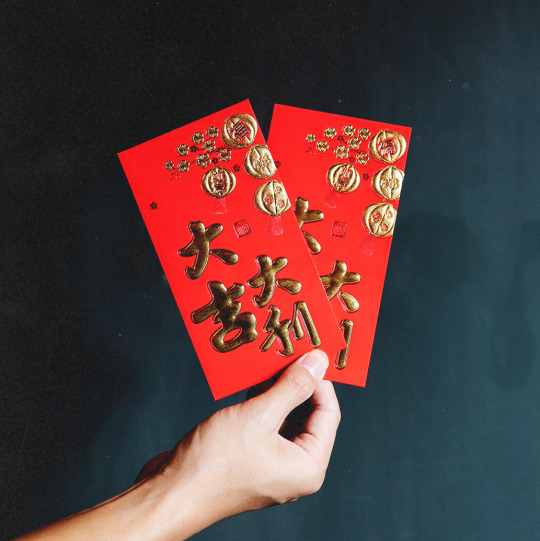
Two Red Hang Bao or Ampao typically given during Chinese New Year posted by Mikhaila Archer via Cosmopolitan (2022).
Christmas Caroling
youtube
Video of children caroling posted by Rauselle Pascua (2023) via YouTube
Christmas Caroling in the Philippines typically start at the beginning of the Simbang Gabi and ends on the 24th, with some caroling much earlier, where children to full adult groups may go door to door to carol for candy, food, or money. Children often go in groups and sing the typical Filipino Christmas songs with makeshift instruments such as tambourines made out of cans and small metal bits to make sounds, while teenagers and adult groups may go around from house to house with guitars and other portable instruments in order to receive cash.
The songs that they sing may range from traditional Filipino songs or modern Christmas songs from both local and international places.
I don't have a source for this one since I do want to look more into the history of Christmas Caroling in the Philippines maybe next year so enjoy this other video of a group of guys dancing Jingle Bells posted by SG TV (2019).
youtube
Side Story: I used to spend Christmas with my, honestly, wealthier grandmother and it wasn't uncommon for carolers to go up our door and just sing for candy or money. It often started on the 16th because caroling wasn't allowed any time before that. We used to have a weird little rule that children would get candy, while teenagers and adults will get money. Teenage boys would come around as whole groups with guitars and sing for money, while kids didn't mind the candy. After a while, there would be times that different people in the house would give candy away so we weren't able to keep track of which kid had already gone to our house. It wasn't until one of the people who worked for my grandma recognized a couple of kids that we realized that they've just been going around the neighborhood before doing another round when people may had already forgotten them. Honestly, I'm a little impressed.
Panunuluyan

Photo of a Panunuluyan posted by Philippines Tourism (@/MorefunTourism) (2018) via Twitter/X
The Panunuluyan is a traditional play that reenacts the night of Jesus' birth where Mary and Joseph were trying to seek shelter (NCCA Official, 2015). The name comes from the Filipino word tuloy which although typically mean "to continue" is used in this context to mean "to allow in" or "to enter in" referring to guests or visitors entering someone's home. Schools and churches typically do this play as part of their Christmas festivities but it isn't as common as it was in the past (Tan, 2016).
Panunuluyan is also called by different names such as Panawagan (en. announcement) in Cavite and Batangas, Kagharong in the Bikol region, and daigon, pakaon, and patores in Visayan speaking regions (NCCA Official, 2015).
Side story: I had a queer classmate who played Mary in one of these plays against their will in a seminary house production because their mom just said so and the place didn't had any afab people (because seminary house obv), and they ended up falling in love with the guy who played Joseph, serving as the only male crush they have ever had. Hilariously, on a seminary boy meaning a dude who wants to be a priest. I feel bad for them...
The Feast of the Three Kings

A photo of the reenactment of the Epiphany story in Gasan, Marinduque showing the three magi meeting with King Herod. Photo posted by Eli J. Obligacion (2011) via the blog Marinduque Rising.
Observed every 6th of January, the Epiphany or the Feast of the Three Kings is a religious observation that marks the formal end of the Christmas season in the Philippines. In the current day, most communities simply go to church to celebrate the epiphany, it was once a common practice to have a large celebration during the day which involves three people dressed up as the three kings, riding horses to the local church, distributing gifts to the townspeople. This practice is still done in some communities in the country today (Primer, 2021).
From photos I've seen of some of the festivities, two members of the three may put on blackface and/or redface to symbolize all three magis who are typically shown as having different skin tones as seen in the previously linked article from Primer, although some places instead have children play the parts of the magi without any blackface or redface.
Closing
As a kid, Christmas has always been special to me and now that I'm older, it's gotten a lot less cheery as all young adults may feel with the season getting less about joy and presents and more about either work and expenses. That sorta happened here when I was initially rushing this even when I was not in the mental headspace for it so taking a break was almost mandatory. I definitely feel a little bummed that I wasn't able to finish this the day of, but I can't really change it as much.
To those finishing my late extremely long-ass infodump about Christmas in the Philippines, thank you so much for reading and have a Happy New Year!
(Part 1: Etymology and History)
(Reference List)
#mayaposts#mayapino#filipino#philippines#culture#filipino culture#christmas#filipino christmas#history#filipino history#traditions#christmas traditions#filipino christmas traditions#colonial history#spanish colonial history#food#long post
8 notes
·
View notes
Photo

7 Ways to Beat Christmas Traffic https://ift.tt/2MfytKl
Christmas is just around the corner! Yes, it’s here–and it comes with the worst traffic all year round. The Philippines has the longest celebration of Christmas in the world. When the clock hits September 1st, Christmas lights and decorations start to fill the lives of Filipinos. Kids start planning their caroling gigs, practicing old Christmas […]
The post 7 Ways to Beat Christmas Traffic appeared first on Lamudi.
0 notes
Text
bitch here in the Philippines we start celebrating Christmas on SEPTEMBER 1ST
If people can start celebrating Christmas on November 1st then I can damn well start my Halloween spirit on September 1st and no one can say crap
10K notes
·
View notes
Text
I find it funny that in the Philippines, the moment the calendar turns September 1st, a lot of people would start playing Christmas music. It's only here that you get to celebrate Christmas for 4 months .. maybe even 5 sometimes, LOL.
#christmas time#Christmas#Christmas in the Philippines#Philippine culture#Philippines#dino's ramblings#dino's queue#start of the -BER months
1 note
·
View note
Text
METAMORPHOSIS ISSUE 49
Human Resources strengthens #SupportLocal Program
The pandemic affected the country in a thousand ways but it also taught the people to be innovative and skillful in terms of resourcefulness. The online world debuted in the time of COVID because it is one way to keep everyone safe from contracting the virus. Asian Hospital and Medical Center ‘s (AHMC) Human Resources Department and Tatak Asian Pusong Asian Team (TAPAT) devised ways on how employees may gain extra income and augment their financial literacy.
Last May 18, 2021, members of TAPAT and HR launchedthe TAPAT Local Market Facebook (FB) page so that Asian employees may have a platform where they can freely post the products they are selling aside from the original Everyday Employee Engagement group.
Various financial literacy and skill building programs were made available to these employees to help equip them on their business plans. The two-part webinar organized by ELITE titled, “How to start and grow your Investment?” facilitated by BDO last April 16 and 23 where the employees learnt about equity, index, and other types of funds. The webinar was attended by close to fifty employees.
As part of their plans, TAPAT is planning to provide a Puhunan package for those employees who want to start their business. Opening the TAPAT Local Market FB group and a weekend market to external customers are also in the list of the future plans. They also wish to collaborate with government or NGO that will provide free trainings and/or seminars for the employees.
In terms of providing employees an area where they may sell their products in the hospital, the opening of the TAPAT Local Friday or Weekend Market at the alfresco dining area is on its way.
Supporting local products and financial wellness began in 2012 for the Asian Hospital community when the Employee Bazaar happened during AHMC’s anniversary and Christmas weeklong celebration. The AHMC Multi-Purpose Cooperative (Coop) enabled employees to manage their finances by setting aside a portion of their salaries and saving it thru the help of Coop.
As part of the Financial Literacy Program in 2014, Manu Life and BDO were chosen to be the hospital’s partners for insurance and payroll accounts. In 2018, a free skill building session was accessible to all employess as there was a photography and videography learning session along with a livelihood program.
For the years 2019 and 2020, an Employee Business Directory posting, Online Employee Business Directory, Personal Financial Management Learning Sessions, and an Online Bazaar was made possible amidst the pandemic. Through teamwork and cooperation, these programs are designed to help the employees boost their fullest potential in local business and financial wellness.
Health Declaration Commitment:
A tool to ensure healthcare workers are in good condition

Asian Hospital’s Human Resources (HR) Department promotes and ensures a safe working environment alongside health and protocol guidelines, the complete accomplishment and submission of Health Declaration survey will help the institution to properly monitor and ensure everyone’s safety.
This health declaration survey covers the physical and mental well-being of all the employees. One way to reward compliant employees is a recognition during the Asian Hospital’s anniversary for all units and departments who have 100% compliance rate in accomplishing the health declaration survey.
HR provides a weekly Health Declaration report for every department to help monitor staff’s well-being. Employees, who have indicators that need assessment by the Employee Health Services, are being monitored and validated once they have visited EHS for their consultation.
The health declaration screening form is based on the guidelines released by the Department of Health to identify those that have signs and symptoms of COVID. When an employee clicks the ELITE button, a member of ELITE will get in touch with him/her for their private conversation regarding the matter he/she wishes to confide with. The employee is assured that all matters discussed are confidential.
As part of their plans, upgrading the system to a mobile application or accessible through QR code scans while retaining the questionnaire content for it to be able to secure all healthcare workers and patients of the hospital.
HR Trainings adapt to New Normal; Blended Learning Experience.

Trainings are essential and are part of an organization. It is with great pride that Asian Hospital’s Human Resources (HR) Training and Development arm has arranged various trainings appropriate for each employee in the new normal.
This includes the CORE programs where the employee is oriented and engaged on valuable information about AHMC and its culture. A Basic Competency Program designed for Non-Clinical employees to have basic knowledge and skills in email writing and advanced knowledge in basic office applications like Microsoft Office.
Some of the specialized programs are “Leadership Toolkit: Fundamentals of Leadership for Line Managers and Supervisors” where they learn about management and supervision, “Keeping it Natural: An E-Stress Management Workshop” promoting work-life balance and a healthy lifestyle, “Fundamentals for Outdoors” where hospital orientation, Customer Experience, and Facilities Management and Safety orientation for all outsourced staff.
A Leadership Learning Series occurs every after an HR update meeting with all the managers and supervisors where it will equip the attendees with management and leadership during this pandemic. Past speakers include Dr. Shirard Leonardo Adiviso, Ms. Serely Alcaraz, Mr. Ed Novillas, Ms. Socorro Yulo Tuvilla-Sevilla, Ms. Abbygale Arenas-De Leon, Mr. Tyne Dignadice, Jr. and many more.
The Leadership Learning Series delved into these points of learning--New and Creative Ways on Employee Engagement, A Key in Leadership Influence: Professional Online Presence, Keeping a Motivated Workforce thru Online Coaching, Performance Measures in the New Norm, Humanizing Technology, Virtual Talent Development, Servant Leadership, Agile Leadership, among others aligned to the new normal.
The Nursing Services Group prepared these trainings—PPE Training, Lactation Midwife Training, Ambulance Training, Cross Training, Peritoneal Dialysis, and Basic Specialty Training. Through resilience and innovation, the Asian Hospital and Medical Center’s Nursing Virtual Platform (NVP) aims to bridge the gap between books, classroom discussions, and how these are translated to actual nursing practice in a tertiary private hospital accredited by the Joint Commission International (JCI).
“Our goal is to continuously provide equipped and knowledgeable employees who are globally competitive and a big help to provide care to all our customers and be our company’s asset.”
Dr. De Jesus drops by CNN Philippines’ Med Talk Health Talk

Everyone grows old and changes are inevitable, that includes menopause in women. While symptoms may be uncomfortable for some women, some find it liberating. Asian Hospital’s Chair of Department of Obstetrics and Gynecology, Dr. Corazon De Jesus talked about menopause and how it affects our physical and mental health and how best to manage it last May 28.
This CNN Philippines’ Med Talk Health Talk episode is available anytime at Asian Hospital’s Facebook page - facebook.com/AsianHospitalPH and on CNN Philippines’ YouTube page- https://www.youtube.com/cnnphilippines and Facebook page - https://www.facebook.com/CNNPhilippines
Simply Maternal’s 1stVirtual Lay Forum
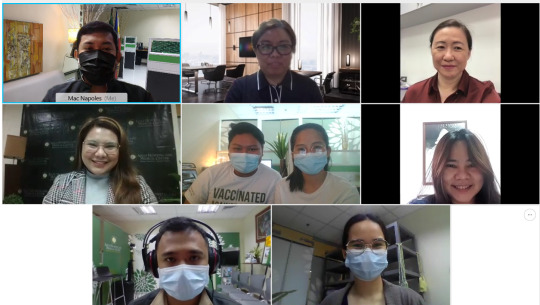
Last May 29, Asian Hospital’s Department of Obstetrics and Gynecology, Pediatrics, and Maternal Child Unit had their Online Lay Forum for Expectant Moms titled, “Simply Maternal”.
The said Lay Forum promoted awareness and guidance to the new and soon-to-be Mommies. The first series were the topics of Caring for the Expectant Moms, Pre-natal Care during Pandemic, Pre-natal Counselling, and Shared Decision-Making between you and you OBGYN doctor were all presented by Dr. Martha B. Aquino of the Department of Obstetrics and Gynecology, and she answered the LIVE questions of the participants.
The Virtual Simply Maternal Series are set to happen on the ff. dates: June 26, July 31, August 28, September 25, and on October 30 all happening at 9:00 AM to 11:00 AM. There is an available digital tour of the hospital’s facilities and the Genesis Center that may be viewed on the AHMC’s FB page.
Pregnant women patients may avail of the Maternity Package that are available in 1st, 2nd, and 3rdtrimester all for a reasonable and affordable price. They may also sign up for eConsults to schedule an online consultation with an Obstetric Gynecologist. For inquiries, they may contact the Genesis Center at (02) 8-771-9000 locals 8391 and 5791.
0 notes
Photo
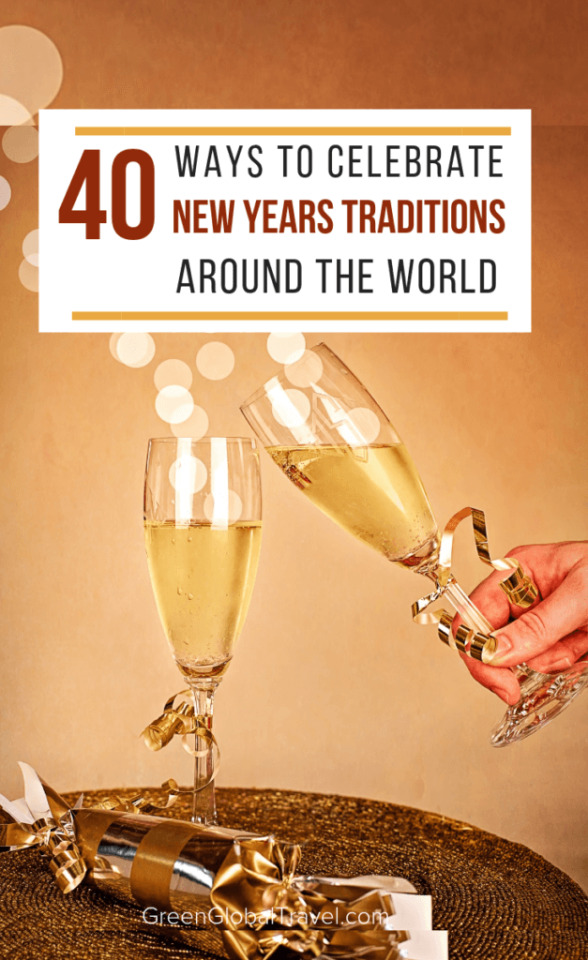
New Post has been published on http://simplemlmsponsoring.com/attraction-marketing-formula/mlm-sponsoring/40-ways-to-celebrate-new-year-traditions-around-the-world/
40 Ways to Celebrate New Year Traditions Around the World
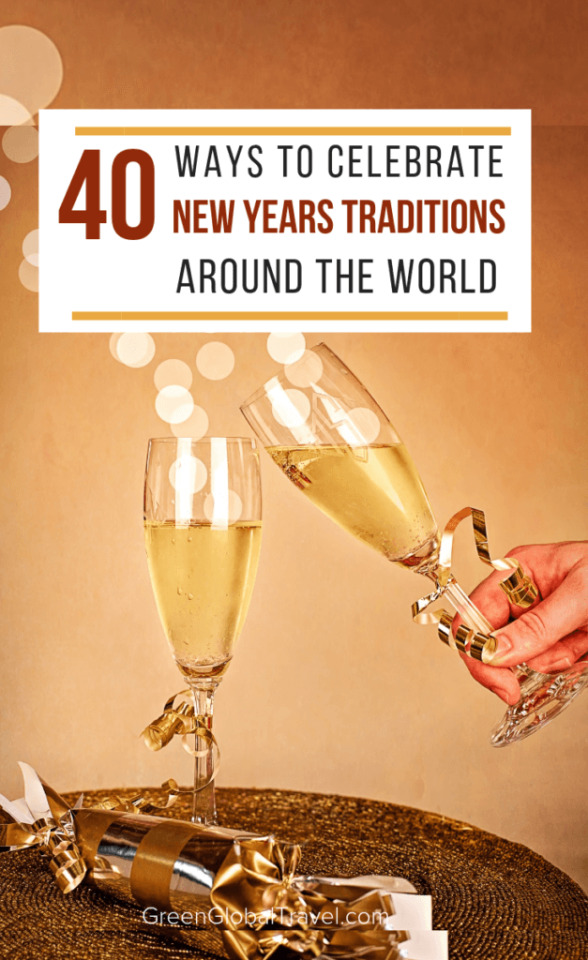
Did you know that more people celebrate New Years around the world than any other holiday? But, of course, that doesn’t mean that we all celebrate it in the same way.
How I celebrate the New Year– watching the NYC countdown on television, kissing at midnight, champagne toasts, and fireworks– may be relatively commonplace in the United States. But New Year customs vary widely in different cultures around the world.
Each country seems to have its own unique New Years celebrations, with different customs for ensuring health, wealth, happiness, and luck in the coming year.
As we learn more about the various New Years celebrations around the world, we may discover strange cultural twists that seem foreign to us. But these unique variations in the way people celebrate the New Year are part of what makes exploring the world so great.
So let’s take a look at some of the more interesting New Year traditions around the world, and see how people will be ringing in 2019. Who knows? Maybe we can find something fun along the way to adopt into our own New Year celebrations.
I know many of us can’t wait to bid 2018 good riddance. So get ready, because New Years Day is coming soon!
READ MORE: 75 Christmas Traditions Around the World

Celebrate the New Year At Home New Year’s Eve Food Traditions Which Country Celebrates New Years First? Traditional New Year’s Clothing New Year’s Festivals Around the World New Year Traditions for Good Luck Shared New Year’s Eve Traditions Around the World
New Year’s Song: Auld Lang Syne New Year’s Resolutions New Year’s Fireworks New Year’s Champagne New Year’s Kiss
Kadomatsu, a traditional decoration for New Year in Japan via CC How to Celebrate the New Year at Home
The home plays an important role in many countries’ New Year’s traditions, which can involve everything from intense cleaning sessions to inviting special guests. Regardless of how it’s done, home is where many people celebrate New Year’s Eve and Day.
England: For good fortune in the newly arrived year, Brits believe the first guest to enter through the front door should be a young, dark-headed male bearing gifts such as bread (to be full), salt (to be wealthy) and coal (to stay warm).
Japan: Oshogatsu is celebrated with family, which both cleans and decorates the entire house together. Then natural decorations such as pine branches, plum blossoms, and bamboo play a special role in preparing for the New Year celebration.
Denmark: As a sign of friendship, people save their old dishes in order to break them on each other’s front doors. Residents will allow these broken dishes to pile up in order to show who has the most friends.
China: To symbolize happiness and good luck in the New Year, Chinese celebrants paint their front doors red. In general, red colors New Years Eve in China, with red packets of money for children, red rackets for married couples, and red lanterns.
Puerto Rico: In addition to cleaning their homes as the Japanese do, Puerto Ricans clean everything— the car, the garden, and even the streets. They also have a practice of throwing buckets of water out the window in order to do away with the bad juju of last year.
South Africa: Some South Africans—particularly those in the neighborhood of Hillbrow in Johannesburg— take cleaning house for the new year to an entirely new level. Throwing old furniture and appliances (think fridges!) from the windows of tall buildings somehow helps to make the new year bright. It’s actually a very serious health hazard there!
READ MORE: 15 Ways to Reduce Waste and Move Towards Waste-Free Living
Black-eyed Peas and Cabbage by Pen Waggener via CC Celebrate with New Year’s Eve Food Traditions
Food is used to celebrate the New Year around the world. In many countries, eating the right thing has a strong influence on the next year’s outlook. Many of these New Year’s food traditions are delicious, but they don’t necessarily make a lot of logical sense…
Louisiana: The New Year’s food tradition I grew up with is eating Cajun-style black-eyed peas and cabbage, with the promise that it will deliver health and wealth over the next 12 months. Even after 12 years of living and working abroad, I’ve never stopped celebrating the New Year with the dish!
Brazil: Lentils are the alimentos do dia for Brazilian New Year’s celebrations. The legume can come in different forms, such as soup, to help with finances in the New Year. Then, before midnight, they believe people should also eat seven raisins (because why not?!).
Austria: The New Year’s food traditions in Austria come two-fold. First, there’s finding a lucky charm that has been hidden inside a suckling pig. Then it’s onto a dessert of peppermint ice cream, which somehow represents economic windfalls in the coming year.
France: The French are known for their weird food preferences. On New Year’s Eve, edible opulence steals the show in the form of le reveillion de la Saint-Sylvestre. Partiers will feast for hours on foie gros, goose or turkey, oysters, and of course plenty of champagne. The top-flight fare is meant to signify wealth in the year to come.
Spain: A challenge in speed-eating, Spain’s New Year’s food tradition requires that people eat 12 grapes at midnight on New Year’s Eve– one for each time the clock chimes. Otherwise, superstition suggests that you’ll miss out on extra good luck for the coming year!
Switzerland: In a strange cultural twist, the Swiss don’t actually eat their New Year’s treat. Instead, they simply drop whipped cream on the floor and leave it there. Obviously, that means richness in the coming year, right?
Estonia: How Estonians make it to midnight on New Year’s Eve awake is a mystery. They should be in a food coma! Tradition dictates that the holiday should be celebrated with a lucky number of meals, with either seven, nine, or twelve trips to the table. However many meals you choose, you’re said to have the strength of that many men (or women).
READ MORE: Traditional Hoppin’ John Recipe (For New Year’s Luck)
Khmer (Cambodian New Year) by Sam Sith via Flickr CC by 2.0 Which Country Celebrates New Year’s First?
Despite the Gregorian calendar being globally recognized, many countries follow different timetables. So some cultures observe New Year’s on a different day! As weird as it may sound, there’s some debate as to which is the first country to celebrate the New Year.
India: While January first is certainly celebrated there, the New Year celebration in India actually has many different dates. Rongali Bihu is the most popular: It’s celebrated in mid-April, on the first day of the Hindu solar calendar. But the specific day of celebration changes from region to region.
Egypt: In Egypt, the New Year’s Day celebration changes according to the moon. But, unlike other countries that go the lunar route, here the festivities do not begin until a crescent moon is sighted!
Cambodia: Another country that celebrates a New Year in April, Cambodia has a 3-day long holiday that is dictated by the end of their harvest season. It follows the same lunar calendar as India, in which the New Year begins when the sun enters the sign of Aries.
Israel: The Jewish holiday of Rosh Hashana brings in the New Year in early autumn, as does the Islamic New Year (usually in late September). Many Orthodox Christians in Israel celebrate New Year’s on the first of September.
Bali: Many east Asian cultures use the lunar calendar to determine New Year’s Day. But some parts of Indonesia use a special Saka Calendar, which puts the holiday on a different date than China’s lunar system. It’s typically more of a somber affair, used primarily as a day of rest rather than celebration.
Samoa: There are 39 time zones in the world. Based on the International Date Line, the islands of Samoa and Kiribati are the first places on Earth to reach the Gregorian calendar’s new year on January 1st.
As for the last country to celebrate the New Year? Though not technically a country, that would be the U.S. territories of Baker Island and Howland Island, two uninhabited wildlife refuges located about halfway between Hawaii and Australia.
READ MORE: 20 Exotic Islands For Your World Travel Bucket List
Traditional New Years Clothing – Vietnamese ao dai via pixabay Traditional New Year’s Clothing
When celebrating the New Year, many cultures take the opportunity to get dressed up in whimsical or dapper fashions. Most of these New Year’s clothing choices are wrought with meaning, and occasionally they’re good for a laugh or two as well.
Philippines: For New Year’s in the Philippines, round is all the rage. People eat round foods, carry coins in their pockets, and wear clothing with nlots of polka dots. The round shape symbolizes money, and is believed to boost your finances for the new year.
Vietnam: The Vietnamese wear brand new clothes to bring in the New Year with a fresh start. These clothes are not the modern Western styles that most people wear in their daily life, but rather a traditional outfit called ao dai, featuring a long gown worn with trousers.
Russia: In a throwback to the Soviet era, most of Russia (except for Russian Orthodox Christians) celebrates something similar to Christmas at New Year’s. Grandfather Frost visits at midnight to leave presents while the kids aren’t looking. Christmas was actually banned in Russia during Soviet times, so New Year’s took its place!
Italy: Like the Vietnamese, Italians wear new clothes to ring in the New Year. As with the Russians, it’s a time for presents, with each gift (things like honey, gold, money, and lamps) symbolizing something specific for the receiver. The gifts are serious business!
Turkey: In Turkey, wearing red underwear at midnight on New Year’s Eve is crucial to bring good luck in the coming year. For that matter, this tradition is also observed in other countries, including Italy, Spain, and Mexico. Red is traditionally a lucky color at this time of year. Who knows how the underwear in particular became important?
Brazil: Taking the idea of lucky New Year’s underpants even further, in Brazil, Ecuador, Bolivia, and Venezuela, the color of underwear helps to determine the wearer’s specific successes for next year. Red brings love, yellow brings money, green brings luck, and so on. Local markets will be festooned with colored underpants leading up to the New Year.
READ MORE: The Best Travel Clothing For 7 Travel Styles
Torchlight Procession Hogmanay. Photo by This is Edinburgh (edinburgh.org) via CC 2.0 New Year’s Festivals Around the World
Some of the world’s New Year’s traditions have an air of seriousness about them. They’re tied up in ancient religious rituals. They’ve been created by lawful decrees. Or maybe they just involve impressively huge fires in public spaces. Regardless, it’s important to recognize why we celebrate the New Year the way we do.
Scotland: Celebrating Hogmanay, which denotes the last day of the year, is a big deal in Scotland. So much so that it often overshadows Christmas. Christmas was outlawed by the Church of Scotland for nearly four centuries, until 1958. Though the holiday has regained its popularity, the New Year Festival of Hogmanay still holds a sacred place in Scottish hearts.
Australia: Sydney Harbour hosts one of the biggest New Year’s Eve celebrations in the world. It’s mid-summer in the southern hemisphere, and thousands of people gather around the Opera House in anticipation. An aerial show and water display kick off the celebration at 6pm. A family-friendly fireworks show starts at 9pm, while the main attraction– the Harbour Light Parade– is at midnight.
Belarus: In Belarus, New Year’s is included as a part of a 13-day festival known as Kaliady. Kaliady originates from the old pagan recognition of the winter solstice. It was only later that the Orthodox Christians added the celebration of Christmas (on January 7). Kaliady has customary foods in three ritual dinners, trick-or-treating, caroling, and more.
Netherlands: Amsterdam hosts one of the world’s largest street parties on New Year’s Eve. If you attend, buy some oliebollen (oily balls) to eat at midnight. Tradition holds that eating these deep fried dough balls will ward off evil spirits in the New Year. Dam Square (the craziest), Rembrandtplein, Nieuwmarkt, and Leidseplein host unofficial street parties with music, fireworks and beer tents. Amsterdam’s celebration is not for the casual partier: Some attendees have likened it to a war zone!
United States: Each year, hundreds of thousands of people flock to New York City to see the Big Apple drop at midnight. This New Year’s Eve tradition actually began as a replacement for fireworks, which had been banned in New York. In addition to watching balls drop, in other US cities you can watch peaches, giant walleye, and other locally relevant symbols lowered as the clock strikes midnight.
READ MORE: 20 Best Festivals in the World (for Your World Travel Bucket List)
New Year’s Eve Ball by Nicole Beauchamp courtesy Flickr via CC 2.0 New Year Traditions for Good Luck
One of my favorite things about New Year’s good luck rituals is that not all of them seem completely sane. Many of the traditions we’ve already learned about on this list probably seem a bit off-the-wall. Here are a few that seemingly come out of nowhere, but remain integral pieces of some countries’ annual New Year customs.
Colombia: One of Colombians’ favorite ways to celebrate the New Year is to carry an empty suitcase around the block. The tradition is meant to bring celebrants a year of travel (which hopefully will involve a little more packing).
Denmark: Many of the world’s New Year’s traditions revolve around the stroke of midnight: fireworks blasting off, the ball dropping, kissing a loved one, toasting with champagne, etc. In Denmark, people jump off of their chairs in unison at midnight. This symbolizes jumping forward into the new year and leaving bad things behind.
Belgium: In Belgium, Walloon and Flemish farmers rise early on New Year’s Day and promptly head out the stables to wish the cows (and other domesticated animals) a happy New Year. Though the origins of this tradition are unknown, the same thing is also practiced in Romania.
Finland: Going to a fortune-teller can either be a fun or harrowing experience. But one Nordic New Year tradition involves reading the future for yourself. Finnish people melt tin horseshoes, pour the molten metal into cold water, and use the resulting solid to gain insight into the coming year. Its shape and shadow supposedly tell all, and a broken piece of tin is considered a sure sign of bad luck.
Japan: In Japan, Joya no Kane is a Buddhist ritual that takes place at midnight on New Year’s Eve. It involves ringing a bell exactly 108 times. Buddhists believe that we humans are entrapped by 108 different desires that keep us suffering. The chimes symbolize purification from the accumulation of these passions over the previous year.
Chile: In the small town of Tulca, Chile, it is tradition to spend the last night of the year at a sleepover at the cemetery. Locals believe that the souls of dearly departed friends and family come to hang around on the night of New Year’s Eve. So they make fires, bring food and drink, and decorate their loved ones’ graves for some ghostly quality time.
Ecuador: In Ecuador, los años viejos (the old years) is a beloved part of how to celebrate the New Year. People construct large scarecrows of those they don’t like and set them alight at midnight in order to burn away the ills of last year. Building the scarecrow is a family activity. While it’s mostly done for fun and laughs, controlling the bevy of fires is sometimes a serious undertaking.
Panama: Panama has a similar “viejo” tradition to the one in Ecuador. Only here the effigies are called muñecos. Rather than simply setting them on fire, the dolls are typically stuffed with fireworks in order to really get the festivities cranking.
READ MORE: 7 Harmful Traditional Practices Tourists Shouldn’t Support
Shared New Year’s Eve Traditions Around the World
And then there are the New Year’s traditions that are celebrated by people all around the world. These shared customs are part of what makes the New Year one of the planet’s most popular holidays. Here’s a look at some of the many traditions that transcend time zones, borders, and cultures…
Singing the New Year Song, “Auld Lang Syne”
Singing “Auld Lang Syne” at midnight is done throughout the English-speaking world and beyond.
The traditional Scottish folk song was transcribed (not written) by beloved poet Robert Burns in 1783. The literal Auld Land Syne translation is “old long since,” which really means, “days gone by.”
After that, it became a common song of celebration—for weddings, graduations, funerals, etc.—throughout Scotland. In the nearly two and a half centuries since, “Auld Lang Syne” has become the most popular New Year’s song in the world.
The tradition of singing it at midnight on New Year’s Eve was popularized by a Canadian band, Guy Lombardo and the Royal Canadians. The band, which came from a part of Ontario settled by Scots, often covered the song, partially to promote one of the sponsors of their radio show, Robert Burns Cigars.
In 1928 the band got a chance to do a New Year’s Eve show and closed their set with “Auld Lang Syne.” It became the show’s closing number for nearly 50 years, the remainder of Lombardo’s life.
READ MORE: Exploring Doune Castle, the Famous Filming Location in Scotland
New Year’s Resolutions
People have been making New Year’s resolutions for literally thousands of years, dating back to the ancient times of the Mesopotamians.
The tradition began as part of a 12-day New Year Festival (which was celebrated in March) called Akitu, during which citizens of Babylonia would swear an oath to the sitting king or allegiance to a new one. The Romans did a similar thing, also in March, devoting themselves to the Emperor.
In the mid-1700s, the Methodist Church used the New Year to encourage its members to renew their commitments to God.
Nowadays, most resolutions are neither oaths to kingdoms or religious tradition. Instead, they’re generally commitments to make some effort towards self-improvement. Unfortunately, studies show that– while nearly half the US population annually makes resolutions– less than 10% of them are kept.
Here are some of the top New Year’s Resolutions:
Exercise more / Get in shape Lose weight Get organized Learn a new skill or hobby Live life to the fullest Save more money / spend less money Quit smoking Spend more time with family and friends Drink less Eat more at home Floss Look at cell phone less Reduce stress Get more sleep Travel more
READ MORE: How to Start a Travel Blog & Build a Successful Travel Blogging Business
New Year’s Fireworks
Invented in ancient China, fireworks were originally made from dried bamboo stalks. When thrown in a roaring fire, they would emit loud bangs.
These were later filled with gunpowder (which was also a Chinese invention) to enhance the explosive effect. Finally, the bamboo was replaced by paper (another Chinese invention).
Around the 12th century, gunpowder and fireworks gradually worked their way over to Europe. Some historical accounts credit the Mongols, while others believe they were invented independently.
Since the beginning, fireworks have been used to scare away evil spirits and enemies. Because the holiday is often associated with starting anew, fireworks have long been a part of New Year celebrations, setting up partygoers for a positive year to come.
Today, the tradition of setting off fireworks as part of New Year celebrations in pretty much a staple all around the world.
READ MORE: How to Experience Traditional Mongolian Culture
New Year’s Champagne
Champagne, some people claim, was originally an English invention as opposed to a French one. The Brits developed the technology to bottle carbonated drinks in the late 1500s.
Using techniques translated from making cider, they began to make sparkling wines (of which Champagne is one variety). This invention also required creating stronger glass bottles that could withstand the pressure built up inside by the fermented drink.
Later, Champagne became the popular drink of choice for celebrations by the royal courts of Europe.
It eventually became a worldwide phenomenon in the late 1800s, when the price began to drop and producers started marketing the drink to common folks. While commoners couldn’t afford it for their daily table wine, it was affordable enough for special occasions.
It became especially popular for New Year’s celebrations because opening the bottle produced a firework-like POP, and the beverage flowed out in a display of abundance.
READ MORE: Weird Foods the French Consider Delicacies
New Year’s Kiss
The tradition of sharing a New Year’s Eve kiss at the stroke of midnight has been featured in countless classic movies, from The Godfather II to When Harry Met Sally. The custom is now a part of most modern New Year’s celebrations.
Amazingly, the practice has been around for millennia, beginning with the Roman festival of Saturnalia. Lots of meaning has been attributed to the kiss over the years. In Roman times, it was more an act of basic debauchery.
German and English folklore cited that the first person you encountered in the New Year (and how that encounter went) would set the tone for the rest of the year. Attendees of masked balls in Europe used it as an act of purification after removing their masks.
These days, it’s widely believed that failing to share a midnight kiss on New Year’s Eve foretells a year of romantic loneliness.
However (and wherever) you may celebrate the New Year, most people around the world embrace and honor the passage of time with mixtures of reverence and revelry. It’s yet another thing that shows just how similar, yet unique, our planet’s diverse array of cultures are.
We value analogous things and celebrate in our own ways. But we all love to share these moments we hold sacred. We should all remember and relish the customs and traditions that unite us this New Year’s. At a moment when division and dissidence seems inevitable, we still have each other.
Happy 2019, everyone! –Jonathon Engels
Jonathon Engels is a traveler, writer & teacher who’s been living abroad as an expat since 2005. He’s worked in nearly a dozen countries, and visited many others in between. He’s currently on a slow travel trip from Central America to Patagonia, volunteering his way throughout the journey. He’s a regular contributor to One Green Planet as well as Permaculture News, which focus on helping to keep the world green and clean. He’s also the founder of The NGO List, a compilation of grassroots NGOs seeking international volunteers.
The post 40 Ways to Celebrate New Year Traditions Around the World appeared first on Green Global Travel.
Read more: greenglobaltravel.com
0 notes